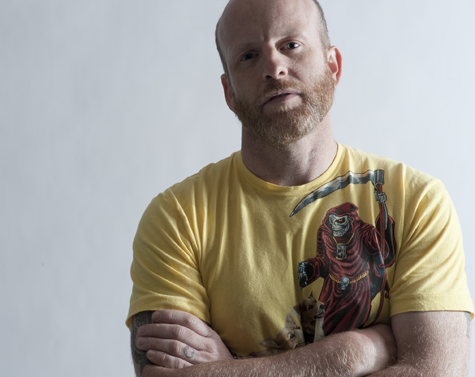From local bands and beyond, here are Submerge’s favorite albums of 2012, in tweet-friendly format. These albums are certified #awesome!

20) Jessica Pratt
s/t
(Birth Records)
Pratt’s debut of home-recorded, time-capsule folk stood as a brilliant reminder of the beauty in lo-fi love letters.
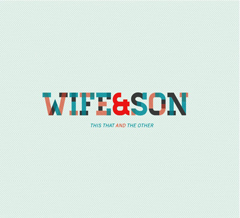
19) Wife & Son
This That and the Other
(self-released)
A brilliant indie-pop record from one of our favorite new local bands. The suburbs of Sacramento have never sounded so good!
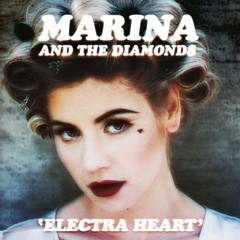
18) Marina and the Diamonds
Electra Heart
(679 Recordings)
Pop anthems with heart and humor for disenfranchised prom queens and introspective home-wreckers.
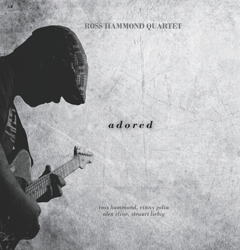
17) The Ross Hammond Quartet
Adored
(Big Weezus Music)
Jazz requires inspiration. The Ross Hammond Quartet’s Adored comes from a budding father’s lullabies fed through free jazz spontaneity.
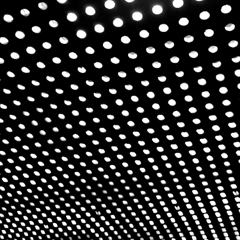
16) Beach House
Bloom
(Sub Pop)
Called a “dream pop duo,” Beach House records a calming and eerie sound unique to much of the music today.
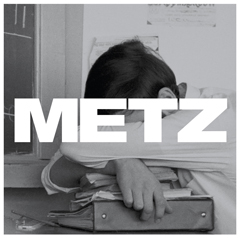
15) Metz
s/t
(Sub Pop)
Sporadic screaming bursts, fuzzy bass and plenty guitar chaos, this album has ears both assaulted and surrendering over and over.
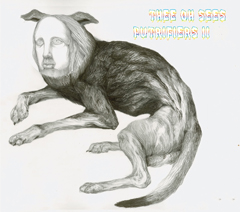
14) Thee Oh Sees
Putrifiers II
(In the Red)
Veteran psych-punk loonies leapt out of the garage and into national consciousness with their liveliest cuts of fuzzy fun.
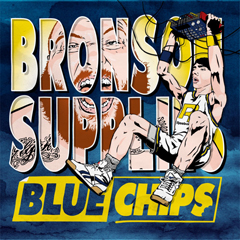
13) Action Bronson and Party Supplies
Blue Chips
(mix tape)
Skillful rapping mixed with humor and bravado over a range of stellar production, and it’s a wrap. It’s a fun album with rewards for mindful ears.
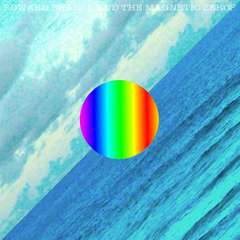
12) Edward Sharpe & the Magnetic Zeros
Here
(Rough Trade)
The perfect band of misfits surpasses all expectations with their second studio album full of charismatic, folk-y love songs and smiles.
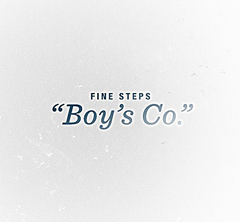
11) Fine Steps
Boy’s Co.
(self-released)
Fine Step’s Boy’s Co. should be on Slumberland. On Captured Tracks. Hell, even Burger. Two self-presses later, Fine Steps gets the glory.
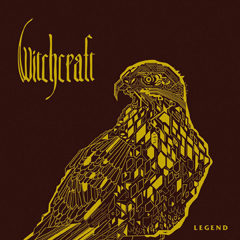
10) Witchcraft
Legend
(Nuclear Blast)
Pure, heavy riff alchemy. Progressive, yet retro. Metal shouldn’t sound this groovy, but we’re glad it does.
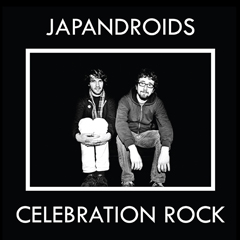
9) Japandroids
Celebration Rock
(Polyvinyl Record Co.)
A fitting album title, indeed. Anthemic as all hell, this is a singalong, raise your glass type punk rock record.
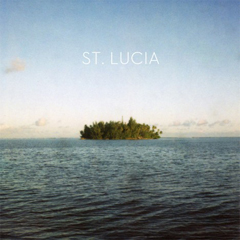
8 ) St. Lucia
s/t
(Columbia)
Catchy, dreamy electro-pop fit for a night club or sweaty hipster venue. Leader Jean-Philip Grobler is a pop-music force to be reckoned with.
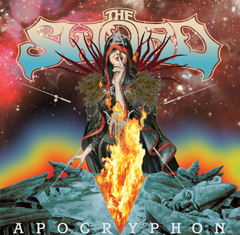
7) The Sword
Apocryphon
(Razor & Tie)
The lords of stoner rock reach new heights on a space-y trip down the heavy metal rabbit hole.
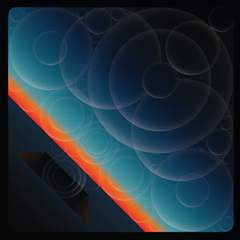
6) The Mars Volta
Noctourniquet
(Warner Bros.)
Nearly three years in the making, Noctourniquet was worth the wait. Sounds exactly like a Volta record should, and that’s why we love it.
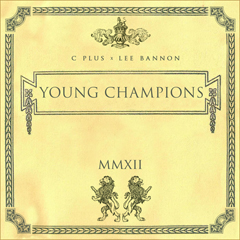
5) C-Plus & Lee Bannon
Young Champions
(self-released)
Two of Sacramento’s finest team up for an epic release. No features, just Plus’ smooth flows over Bannon’s undeniably sick beats. Go cop it!
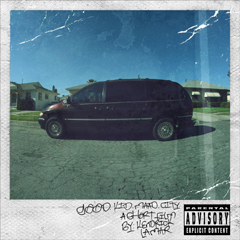
4) Kendrick Lamar
Good Kid M.A.A.D. City
(Aftermath/Interscope)
Believe the hype. A brave debut, from a bright mind who showed that you can create outside the box and succeed. Truly masterful in every respect.
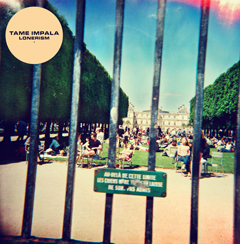
3) Tame Impala
Lonerism
(Modular)
Lonerism is damn near perfect. It’s a psych album with pop melodies; heavy guitars, intricate drumming, humming keys and an irresistible sonic sheen.
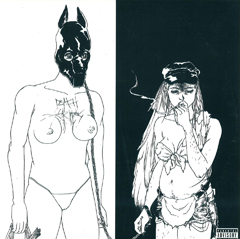
2) Death Grips
The Money Store
(Epic)
Weird, angry, non-imitable experimental hip-hop from Sacramento. Is it rap? Is it punk? What the fuck is it? Don’t ask, turn it up!
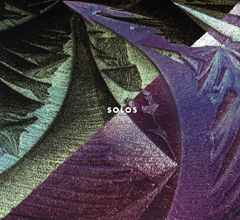
1) Solos
Beast of Both Worlds
(Joyful Noise)
The sonic symbiosis of this Aaron Ross/Spencer Seim collaboration explored bold and bizarre realms. Sleeper LP of the year.
Juan MacLean Adds a Very Human Touch to Electronic Music
“You know what’s weird is a name came up on my phone. You must be calling from a landline,” said Juan MacLean from his tour bus. When Submerge contacted him for our interview, we did in fact call from a landline. It was a quirky way to start the interview, but set the tone for speaking with a man whose career in music is flavored with contradictions, and we mean that in a good way.
MacLean, or The Juan MacLean or just John MacLean, began his career in music as a founding member of the ‘90s dance punk band Six Finger Satellites, which was signed to the influential indie label Sub Pop. After he parted ways with his band, MacLean eventually reinvented himself as a solo electronica artist. With help from LCD Soundsystem’s James Murphy, MacLean has released a few recordings under The Juan MacLean moniker for another influential indie label, Murphy’s DFA Records. MacLean’s most recent album of original material, The Future Will Come, was released in 2009 and features another LCD alum, Nancy Whang, on vocals.
When he’s not performing his own music, MacLean can also be found touring the world as a DJ. When we caught up with MacLean, he was on the road with Simian Mobile Disco and had just performed dates in Canada. In 2010, he released his first mix album, DJ-Kicks, a collection of modern house music. MacLean said that the process for cultivating tracks for the mix wasn’t as arduous as creating his own music, a process he described as “torture,” but it certainly had its challenges.
“I did spend a lot of time thinking about it, which might not seem like working,” he explained. “Because of the Internet, you can really start chasing your tail, because at some point you realize that you’re never going to have tracks that people can’t just get within 30 seconds, because everything is out there and everyone knows everything. So playing this game of having the most obscure tracks is pretty much pointless at this stage of the game.”
Instead of trying to find tracks off the beaten path, he took a different approach to putting together DJ-Kicks. He didn’t attempt to wow listeners with rare songs, but rather allowed the craft of actually making the mix take center stage.
“My answer to that was first of all to use all vinyl and mix it in the classic way,” MacLean said. “Making a mix live with vinyl–I think it always does impart this human feel to it…”
It’s this inherent humanity that MacLean feels is missing from modern music. Interesting, considering he has made a name for himself in the world of dance and electronica–two traditionally mechanical genres. He explained that the little imperfections and “constantly correcting the mix in the middle of the mix” creates “a more friendly, human feel to the actual mixing.” He likened the experience to listening to old Rolling Stones or Led Zeppelin albums, “where everything sounds kind of off.” As for the auto-tuned, pitch-corrected and quantized music of today, MacLean added, “They don’t sound like human beings anymore.”
In the following interview, MacLean also shared his opinions on the difference between the dance music cultures in the States and overseas.
How is the tour with Simian Mobile Disco going?
Yeah, it’s actually been really good. Even in places like Denver on a Monday night it’s been insane.
Is Denver just not a happening town?
Yeah, it’s usually really bad for all of us. It’s just one of those places for dance music, it’s just really bad. It was crazy. It was packed. I think they were on a lot of drugs.
That helps, I guess.
It does.
You’re on the road a lot. You must have a pretty good idea of what kind of crowd you’re going to get from place to place, but do you get surprises like that night in Denver often?
For sure. It’s mainly in the United States where there are the most wild cards, because most other places in the world, dance music culture is a little more ingrained and established. You really know what you’re getting when you get there–in a good way. In the United States, it’s a battle. It’s just a relatively new thing here.
So it’s just not as ingrained in the culture here as it is in Europe?
Well, there are a few different elements to it. In the United States, traditionally, people who are into live music–rock or indie rock–are not interested in seeing dance music or a DJ in any way. The two things are incredibly divided. I think it’s fair for DFA to take credit for being a big part of bringing indie rock audiences to the dance music world. Now there is a lot of crossover, and it’s not unusual to see rock music and dance music at the same time, or see a band one night and a DJ the next night. In Europe, that’s just the way it’s always been. They don’t understand that kind of fragmentation–being restricted to one thing.
It’s funny because I grew up listening to alternative rock in the ‘90s, and you see clips of live shows back then and people are just jumping up and down and getting into the music, and then when it began to segue into indie rock, the crowds got very still and stagnant. They don’t move at all. You think that’s part of the reason why it’s hard to get the indie kids to come out and dance?
I spent the ‘90s playing in an indie rock band signed to Sub Pop. I just got used to playing a sold out show and looking out and seeing a room full of people with their arms folded. It was also a very male-dominated thing. The audiences were like 80 percent male. Especially in American culture, doing much of anything while music is playing would be considered really gay or something. We live in a very homophobic society, no matter how open-minded people in the indie rock world think they are, when it comes to indicators like that, I think it’s still a really homophobic batch of people. Dance music seems to be a bit more female-driven, in a practical way. If you’re trying to get a room full of people who aren’t dancing yet, girls are always going to be the first ones to dance, because guys aren’t going to be the first ones out there dancing. I think it’s because they’re afraid of being perceived as gay–unless it’s at a gay night, which are always my favorite gigs to do in the United States.
Just because the crowd is the most receptive?
At gay nights, nobody cares about being cool, about being cool in front of other people. It’s just totally removed. It tends to be just people having fun.
I was reading one of the reviews of your live shows from your current tour and the writer was quick to point out that you use mostly vinyl on stage. I thought it was interesting, because the laptop is the instrument of choice among DJs now.
I think people are starting to take notice again, especially in the United States. They’re just not used to seeing people use vinyl. I think when you see someone up there, even if you’re not doing much and just hanging out and listening, which is fine, to watch someone mixing vinyl or to watch someone looking for the next record play, and putting it on and getting the mix right, it just makes the DJ… For one thing, you have to move. You have to move around a lot, you have to always be doing something. It’s even more interesting just to look at than someone looking at a laptop screen. I think there’s a psychological thing now, when they see someone looking at a laptop screen, that image is what they associate with the world of work or down time looking at Facebook or something. I think there’s a psychological process that is off-putting to people, and that’s not even to disparage people DJing with laptops. I have friends who are amazing using a laptop. I’m not. I just can’t do it. But there are also a lot of people who are abusing how easy it is to DJ with a laptop. I think that’s where the trouble comes in.
Does that bum you out a little bit? I guess it could be relative, but I know photographers who really like digital cameras, but they’re bummed that they make it easy for anyone to think they’re a photographer.
It is very analogous to a bunch of fields. Also graphic design–everyone thinks they’re a graphic designer now just because they have Photoshop and Illustrator. It’s actually been a big conversation on this tour with Simian Mobile Disco, because in America, it’s much more prevalent than it is elsewhere in the world. I think you can say the same thing in any of these fields, which is now we have an abundance of people who are not so good or mediocre at doing all of these things, but it does make it even easier for those who are professionals and have put a lot of time and effort into honing their crafts and have real talent, it makes it easier for them to stand out when people see it.
For the DJ-Kicks collection, you made a collection of modern house music. Dubstep has become really popular in dance clubs recently. Was this mix sort of a statement that house is still alive and well?
Well, from the beginning for me, it’s always been an influence. It’s comparable where for James Murphy in LCD Soundsystem, he’s always really been into disco, but LCD Soundsystem songs often don’t sound very disco. It was just always something I was into, especially early Chicago house tracks–some of them were things that I’ve ripped off for years and years. When it came time to do a mix, it was just the most logical thing for me.
You said these are things that you’ve been ripping off for years, is this your way of paying it back?
Yeah, in a way. This is where I’ve been coming from forever, and also I think in the hipster world, people have been into disco for so long, for me, it got really old and tiring. I thought if there was some way to expose people to what came after disco, then maybe that would be a good thing.
Juan MacLean will perform a DJ set at Mix Downtown in Sacramento on April 7, 2011. This will be opening night of a new monthly party Lights Down Low, featuring resident DJs Shaun Slaughter, Adam J and Alx-T. To RSVP for free admission (before 11 p.m.) go to Ldlsac.tumblr.com
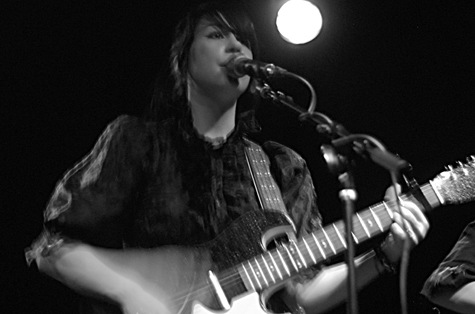
Dum Dum Girls, Crocodiles
Tuesday, June 29, 2010
Blue Lamp – Sacramento
Words & Photo Vincent Girimonte
Dum Dum Girls maestro Dee Dee stands tall over an attentive Blue Lamp crowd eager for the “buzz show of the summer” last Tuesday, hammering away on distortion and crooning about whatever people were crooning about in 1960s Western Europe–in the movies, that is.
Niche doesn’t begin to describe this band’s appeal; the Sub Pop girls in frayed lace, leggings, and sporting beautifully chopped bangs have that production-line mannequin sound that reeks of art-school irony, but continues to resonate nonetheless.
One can’t help but wonder what shape Dum Dum Girls, who headlined Brian McKenna’s bill after local act Chelsea Wolfe and San Diego’s Crocodiles, would have taken if Dee Dee’s original bedroom project were to explore something other than the four hot-chick dynamic, and whether it would have proven more interesting.
Last Tuesday’s Blue Lamp incarnation was scintillating for its lustiness–legs, thighs, lipstick; they all nailed it–and Sandra Vu beat on drums like some steamy Amazonian coxswain. The sound, however, while pulling heavily from ‘60s pop, also seemed to play on our current infatuation with the washed-out and feminine. Lines were sometimes blurred with Vivian Girls and former HoZac Record mates The Girls at Dawn–regardless of who was there first (and despite their leggings), Dum Dum Girls is drawing from a familiar well.
This gripe doesn’t necessarily speak to Dee Dee’s (aka Kristin Gundred) ability, however. She blew a few big notes in a sort of Pat Benatar homage, shimmying just a little to the rhythm with a menacing scowl. Her vocals meshed nicely atop the pervasive lo-fi guitars with bassist Bambi and fellow guitarist Jules, both statuesque in the literal sense, playing foils to Dee Dee’s subtle charm. In short, there was nothing wrong with the snappy set, but nothing terribly distinguishing about it either.
I Will Be, Dum Dum Girls’ 2010 release, was co-produced by Richard Gottehrer, a pop veteran who wrote such classics as “My Boyfriend’s Back” and “I Want Candy.” An old-school catchiness permeates through I Will Be, re-imagining and alluding to a time when crisp numbers reigned with Wall of Sound production. Not everyone was buying it at the Blue Lamp, though, or maybe we’ve just become tired of it for the second time around.
Patrons spilled out of the venue on Alhambra and N for fresh air between sets–Blue Lamp regulars claim it as Sacramento’s muggiest venue, which of course is amplified by June-coming-on-July heat. Ordinarily, such a spot deems tight leather jackets a nuisance not worth the classic motif, but strutting and strapped in to his Italian diaper was Crocodiles singer Brandon Welchez, quite committed to the whole “I’m fucking awesome” thing, propped up by the fact that he sounded pretty fucking awesome. New single “Sleep Forever” is a soaring hip-thruster, and tracks from their decidedly average 2009 Summer of Hate album seemed well suited for all 10 cubic feet (roughly) of the Blue Lamp. And even if you weren’t buying it, with the Crocs or the Dum Dums, you had to admit: they were selling it pretty hard.
Band of Horses releases Infinite Arms under a new face
When asked if he had any parting words at the end of our interview, Band of Horses keyboardist Ryan Monroe paused, chuckled a bit, then hesitantly replied, “I slept all day–and we’re about to sound-check with Pearl Jam.”
No tone of arrogance, no bafflement, just a light-hearted response, moments before he bid adieu on the phone. Mere days from the release of their much-anticipated third record, Infinite Arms, Band of Horses has recently begun their tour with Pearl Jam, placing them in mammoth venues like the Greek Theatre and Madison Square Garden. Touring arenas and amphitheaters like these is normally reserved for bands at an aged and veteran point in their successful journey, but Band of Horses is on the entirely opposite end of their timeline. They’re just now settling into their identity, one newly born. It’s been a slow growth spanning the last three albums, starting with elements as basic as the formation of the band’s current lineup, now consisting of Monroe, Ben Bridwell, Tyler Ramsey, Bill Reynolds and Creighton Barrett.
“Ben was trying to find the perfect band that he could live with,” Monroe explained. “We’re all family; that makes it super easy to collaborate, super easy to play on the same stage as someone you really love and respect.”
The two records prior were less of a band effort and more a product of Bridwell with guests coming in-and-out, including co-founder Matt Brooke, who left the group in 2006 to focus more on the equally impressive Grand Archives. Monroe himself joined in the beginning of 2007, toward the end of the writing process on Cease to Begin, in the midst of the five becoming a solid collective. The group searched for a sixth band member on-and-off for a couple years, but seem to have settled on their melodious troupe. Though their time together in Band of Horses is still short, the connections between the band mates go years back, in some cases to adolescence, whether it’s Bridwell and Monroe playing baseball together during grade school, or Barrett and Bridwell meeting as teens, gushing over their mutual adoration for Dinosaur Jr. This level of history between them gives a certain level of aged comfort to their dynamic.
“Makes it really, really, really easy to collaborate,” Monroe said.
Once the present unit had been defined, the five-piece decided to take to the making of Band of Horses’ third album, which unexpectedly became more of an extensive journey rather than a quick task.
“Initially we wanted to go into [Alabama] and knock out the record like, The Who or whatever; a week long, go in and knock the record out old-school style,” Monroe said.
The recording of Infinite Arms ended up elongating into a two-year process of bouncing in and out of the recording studio. The creation of the album coincided with the end of the Horses’ Sub Pop contract, at which they parted ways and were taken under the mighty wing of Columbia Records. However, simultaneous to joining a major label, Band of Horses decided to take a more DIY approach to the recording process and instead of having trusty producer Phil Ek step in, they opted to take the reins and produce a majority of the album themselves. With no outside parties to limit them, the Horses had the freedom to really stretch boundaries and take risks with their arrangements.
“I think we got away with some stuff on this record that a lot of producers wouldn’t allow,” Monroe said.
To take an even stronger grip of the album, Bridwell also decided to fund the recording process himself, which allowed for any instrumental curiosities or vocal experimentation to be seen through and toyed with.
“We tried everything, it was no pressure,” Monroe said.
In order to self-fund, the group had to take several pauses from the studio to gather cash by means of touring. This included spots with all-time greats like Neil Young and Willie Nelson, along with holding their own impressive sets at legendary joints like Carnegie Hall, all the while popping back into the studio for brief sessions. This back-and-forth became a regular pattern.
“There’s no telling. We’d play live for two weeks, then two weeks in the studio, so I don’t know, seven or eight sessions,” Monroe said.
The space between each session allowed time for the music to marinate in their minds, for “being able to hear what you did, being able to listen to what you’ve done for the past two weeks while you’re on the road, if you want to change anything or write lyrics,” Monroe said.
The stretching out of each recording step alternatively led to a lot of analysis as well, dissecting each new addition, sometimes to a fault.
“You tend to over-think things, you have so much time in between,” Monroe said.
In between jaunting around countless open-armed venues, the Horses would gather in the studio, each presenting their own separate material, which made for a plethora of possibilities to tinker with. With the ultimate goal of building one smooth, set sound, roping that many individual styles into one set album was somewhat of a tricky maneuver. The result became an amalgam of sounds, complementing one another, bleeding into a cohesive effort to represent Band of Horses as a genuine whole. Will it be equal-parts collaboration from here on out? Nothing has been entirely set in stone.
“We’re still a really young band,” Monroe said. “It might be you’ll have a couple songs written by a couple people in the band in the future, maybe no more.”
While a large amount of signature Band of Horses sound still obviously remains, Infinite Arms shows that two years have passed and resonance has evolved and expanded through the addition of new sets of hands. Songs like “Compliments” and “Laredo” have strong, percussive pulses, less driving and more rhythmic than previous works. The contribution of multiple minds is apparent with more swell in the songs; not just because of the addition of occasional strings or those defining soaring harmonies the Horses have so fluently honed, but the latency of equal effort, proved by each song’s character. Nothing sounds formulaic about the album and each track has its own presence, like a bright quilt, in some ways “projecting what the future sound of this band is going to be like,” Monroe said.
Lyrically, Bridwell manages to keep that thin wall between the listener’s interpretation and his own defined meaning, whether that’s an intentional move or a writing style is yet to be concluded, but it allows a little leeway for the audience to make their own interpretations.
“The listener can choose their adventures if everything’s not so literal,” Monroe said. “Keep a little mystery, everything is so not mysterious these days, trying to hang on to a bit of that,” Monroe said.
The mystery is how these men continue to keep their cool. How they can come this far–from childhood to present, from actual years of effort toward recording the anticipated Infinite Arms, from miles of touring to earn the bread to make the record from their own pocket–and stay levelheaded. In the same breath as explaining the evening’s plans of sharing the stage with Northwest grunge idols Pearl Jam, Monroe simply followed with, “…and coconut water is the best drink ever.”
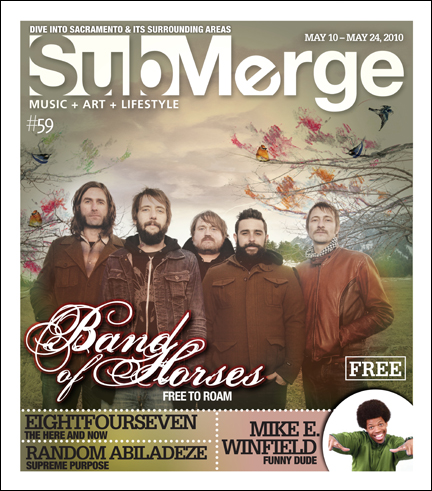
See Band of Horses (sans Pearl Jam) live at Freeborn Hall on the campus of UC Davis on Thursday, May 27. Infinte Arms will be released May 18.
Hyper, Aware
Fun isn’t always easy. Sometimes you have to work pretty hard to have a good time. Take, for instance, Get Young, the debut from Boston’s Pretty & Nice for Sub Pop imprint Hardly Art. Frenetic beats, knee-jerk changes and myriad bleeps and bloops combine to create something the modest world of indie rock desperately needs—a pulse. However, Get Young wasn’t the product of a few, orgasmic recording sessions. Instead, the band—then a trio—was holed up in their basement for five months, painstakingly crafting the album.
“It was kind of an arduous process anyway,” says guitarist/vocalist Holden Lewis. “We were all working full-time jobs, so we’d work from six to eight hours, and then go home and record for five months or so, which was not the way to do it maybe. I think we’re going to take time off when we do the next one.”
Get Young was released in Oct. 2008. A few months later, in January, drummer Bobby Landry quit the band.
“It was bad and good I guess,” Lewis says of Landry leaving the group. “There was a lot of personal stuff, and a lot of artistic stuff. We’re probably better off, and he’s probably better off.”
Landry’s departure has Pretty & Nice back in its original incarnation, with Lewis and co-guitarist Jeremy Mendocino. The lineup change and “arduous” recording schedule of Get Young have not seemed to discourage Lewis from heading into future efforts. He reports that he and Mendocino have already begun writing new material and tweaking songs that were written during the Get Young writing cycle that weren’t included on the album.
“Jeremy and I have been in each other’s heads for a long time,” Lewis says. “I’m looking forward to having some playtime in the studio.”
Submerge spoke with Lewis just a few days before Pretty & Nice hit the road for a nationwide tour.
You grew up in Burlington, Vt. What was it like growing up there, musically speaking?
Burlington is sort of like a little melting pot, as long as that melting pot doesn’t include lots of Jews or black people, but there are a lot of different people doing lots of different things in terms of art and stuff like that. You can sample whatever you want up there, so we got into a lot of wackier music when we were younger. We had a small but firm support system up there when we were starting the band, so it was a pretty good place to play music for a while.
Now you guys are living in Boston. What’s the scene like there?
There’s a lot of good bands in Boston, but there’s not a lot of good labels or booking agents based out of here. The music industry stuff here is mostly just in Boston, so you don’t hear of this really great label or company you want to work with when you’re in Boston, so we end up working with companies and people who are outside of the city, which is not always ideal. Boston’s got a ton of great bands, though, so there’s never a shortage of good bands to play with.
Have you and Jeremy started writing anything yet?
A little bit”¦ Yeah, we’re working on it. Things are coming along pretty well. We’re psyched to spend a lot of the summer in the basement.
What direction do you see your writing going with the newer stuff? Is it comparable to what was on Get Young?
Yes and no. A couple of the songs we’re working on, we’d intended to put on Get Young, but they didn’t make it on for one reason or another, and then a whole slew of new songs are popping up here and there. I hope they’re different [laughs]. I think they’re different. We don’t really start the writing process with a specific idea of, “We’re going to write this kind of song.” Whatever inspires us”¦an idea comes, and then it comes, and we use it.
Have you started any lyrics yet, or is that something that comes later?
It depends on the song. We’ve got some lyrics for some songs, and a couple of songs that we know what we’re going to write the lyrics about but we haven’t started them yet.
What have you been writing about?
There’s one song about going to the hospital”¦about pills and getting sick and all that stuff. I think I might write about colors or something like that.
Are lyrics that important to you, or do you focus on the music more?
They didn’t used to be, but when we were working on the last record, I got way into writing more specifically.
Listening to Get Young, there’s a lot that goes into every song, especially since these are basically pop songs. “Piranha” is almost schizophrenic, and I don’t mean that in a bad way. Is it a struggle to have so many ideas and still keep the songs focused?
I think we just get really bored with repetition. We’ll get bored with writing a song a certain way, or having a structure be a certain way. We’ll try to screw around with things to keep our own interest, really. At the end of the day, we write songs for ourselves.
Did breaking out of a conventional mold contribute to the lengthy recording process?
I don’t think so. The reason we took so long was that we wanted to take our time with everything and let it come together as it wanted to.
A lot of the songs are very aggressive rhythmically, but “Peekaboo” and “Solar Energy” were a lot more laid-back and atmospheric.
What was the inspiration behind those two songs?
Each one of those is about a specific person, and I think that’s why they ended up being that way. I think “Peekaboo” started out as a faster song, but I slowed it down and decided it would be nicer at a quieter, softer pace. You can always slow a song down, or speed it up, but hopefully it has a place that it likes to be in.
That song seems like it’s in a good place in the album as well. It’s preceded by some of your faster songs. It’s a nice breather before Get Young picks up the pace again. Was the sequencing of the album something you paid attention to?
Yeah, we’re aware”¦ [laughs] We’re actually hyper-aware of how hyper our music is most of the time. While we can keep that pace for as long as we want, we realize most people aren’t as ADD.
With the rise of MP3s, the album almost seems like a lost art, as well”¦
We’re record people. We really like to have a physical thing that has a specific way that you’re supposed to hear it. It’s given to you as a set piece of artwork. That would be the school we’re interested in. I’m sure our next release will play to that, hopefully even more so than Get Young.
Get Young is just 10 tracks, and before you mentioned that a few of the songs you’re working on now were in the mix for Get Young, but didn’t make the cut. Was there a temptation to go longer?
Well, I wouldn’t say that they didn’t make the cut so much as, for other reasons, we decided not to put them on. Either we thought they didn’t fit with the track listing as well, or we just wanted to work on them longer.
In the behind-the-scenes video, you all seemed pretty good at critiquing one another. Would you say you guys are good at self-editing one another?
Yeah, especially when we’re recording. We’re pretty picky. It wasn’t uncommon for a two-minute drum track to take eight to 20 hours”¦ [laughs]. For one reason or another.





















